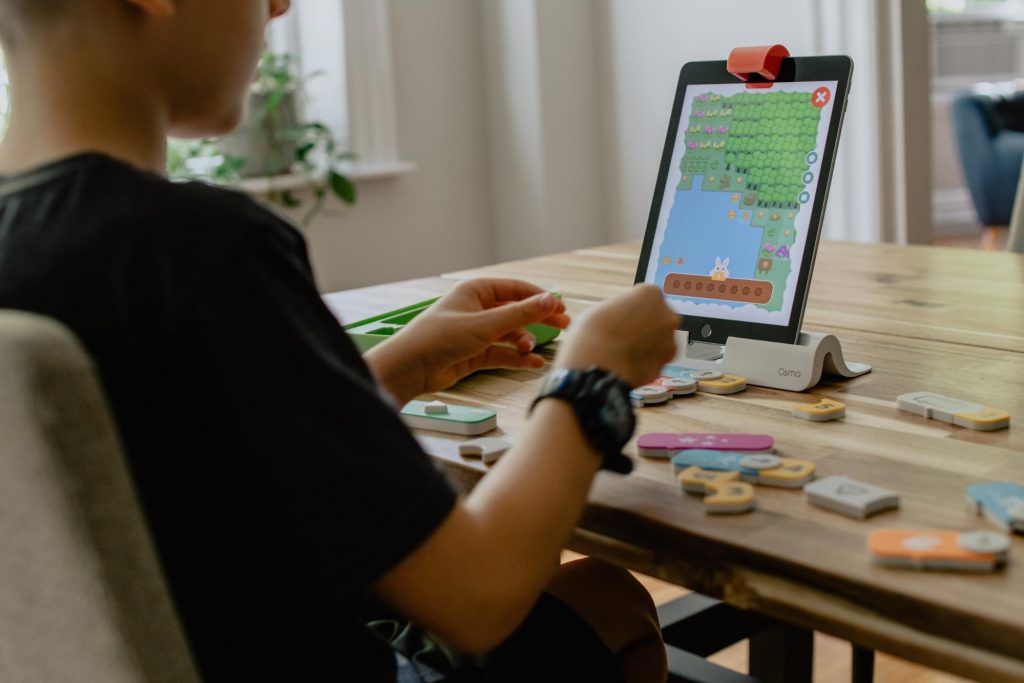Choosing the best coding language for kids is not an easy task. Besides the fact that coding itself is already quite difficult for some of us, coding for kids is a different ball game.
Over the past few years, several programmers and developers have come up with different programs to engage kids in coding. They even created block-based visual programming languages to make learning a lot easier for kids.
Since more and more jobs and businesses are moving online, knowing a few coding languages will always come in handy. Kids in turn can use this skill for any career they chose to pursue in the future.
So why not start them early and teach them a few coding languages now?
If you Google search kids coding languages, you would be overwhelmed with the amount of coding languages out there (some of it you might not even heard of).
So to help you pick the right coding language for kids, let us answer some of the most pressing questions among beginners first.
Table of Contents
What is the easiest kids coding language?
If you ask me, I will probably answer HTML. Since I live through the Myspace Era, I can definitely say that even kids would not have a hard time learning it.
However, some would disagree with me.
While HTML is a coding language, it does not have the functional purpose of programming.
So, in turn, we would rule out coding languages like HTML and CSS.
Instead, we would focus on easy-to-follow languages used in programming that is best suitable for kids.
Scratch
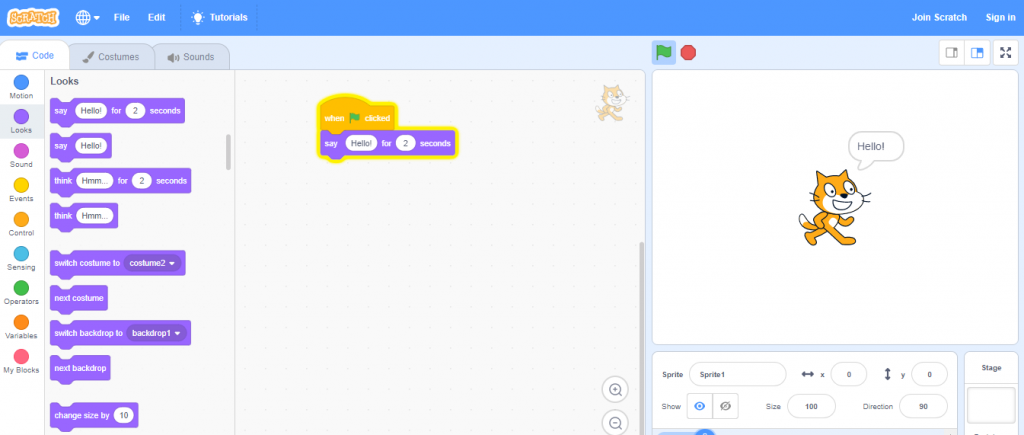
Best suited for children between the ages of 8 and 16, Scratch is one of the best introductory coding languages for kids.
It is one of the most visually-appealing tools used in teaching programming. Developed at the Massachusetts Institute of Technology (MIT), its main goal is to teach kids the basic concepts of programming without taking the fun out of learning.
Since brain research tells us that when the fun stops, learning often stops too, it is best to introduce programming in the most enjoyable way as much as possible.
With the help of Scratch, kids can build apps, create animations, and design games all while learning the fundamentals of programming.
For kids, Scratch might even feel like a coding games and not a lesson or some programming language that they have to learn.
The drag and drop interface makes it easier for kids to spot and fix errors. As a result, they would not feel discouraged every time they hit a roadblock.
With Scratch, kids are able to understand the process, ideas, concepts, and logic behind programming.
It can provide them with good foundational knowledge, and maybe introduce them to other coding languages as well.
Scratch is the most recommended introductory learning tool that would help jumpstart a kid’s journey in programming.
Blockly
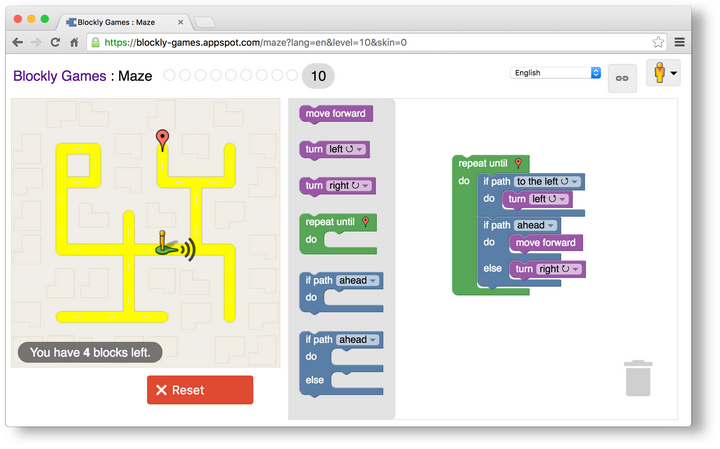
Blockly is the counterpart of Scratch. Its drag and drop interface would be perfect for kids as well.
Aside from the visual way to build code, kids can export the blocks they created to other programming languages such as
- JavaScript
- Python
- PHP
- Lua
- Dart
The text-based code is visible on the side of the screen, which in turn makes it easier for kids to master or familiarize themselves with text-based codes from early on.
Like Scratch, Blockly’s user interface is kid-friendly as well.
Kids can learn the ropes of programming through visually appealing blocks and they are introduced to several text-based coding languages.
With the visually appealing interface and the possibilities of creating a new app or a game, kids would surely find programming less tedious and boring.
This block-based program is a project of Google that is free and open-source. It also comes with a library containing prewritten languages which can be easily used.
Swift Playgrounds
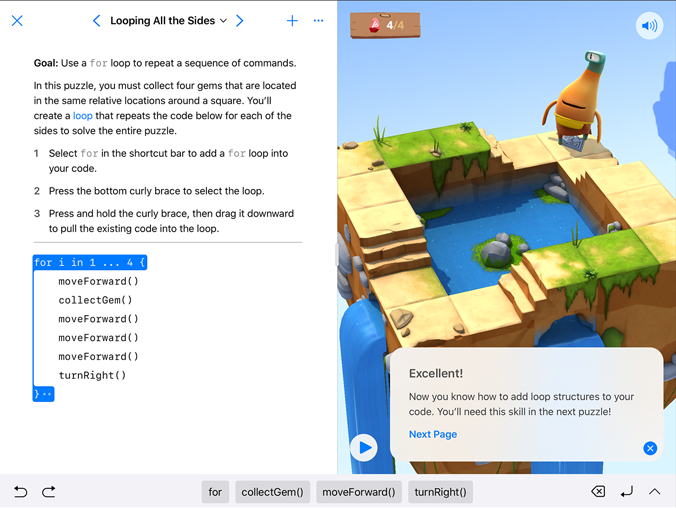
Another one to add to the graphical-based coding for kids is Swift Playgrounds. Like Scratch and Blockly, it also has the drag and drop functionality.
However, it does not just allow kids to drag simple blocks. Swift Playground made it possible for kids to drag braces around a code as well as wrap existing code in a loop and so on.
Swift Playground is an app that teaches kids Apple’s programming language called Swift. The app’s gamified interface will surely make coding for kids a lot easier.
It uses puzzles to introduce different coding concepts to kids. As they move along the game, the puzzles get harder and they, in turn, have to overcome more complex tasks.
Not only will kids be able to learn the fundamentals of coding, but they will also be introduced to Swift in text-based form as well.
The disadvantage of this coding apps for kids is that it only runs on iPad, and Swift language is only used for iOS app development.
Ruby
Ruby is perfect for kids and beginners because it is a self-explanatory language. It follows the Principle of Least Astonishment (POLA) philosophy so it has a clear syntax, easy-to-read, consistent set of codes.
It is a versatile coding language that can be used to create sites, apps, and so on.
Aside from that, Ruby is an easy coding language to pick up for kids. It can be a good introductory coding language for kids who are just starting to explore text-based codes.
Picking up Ruby at an early age will help kids further understand other popular coding languages like Javascript and Python.
Despite not being the most popular programming language nowadays, Ruby is still used in some of the biggest companies in the world.
Java
If a kid is into computer games like Minecraft, then Java can be one of your options for kids coding language. You can introduce Java as a supplementary tool for Minecraft.
Rather than looking at it as a new thing that they have to learn, you can teach it to them as a way to enhance and customize their game instead.
This way, they would be more inclined to learn and explore it on their own.
Kids can learn Java principles as well as have a strong understanding of its concept through games.
It is worth mentioning that Java is arguably more complicated than the next two coding languages we are about to discuss.
Java would not be my first suggestion for kids coding languages. However, it is a great way to introduce coding to kids, especially if they play games like Minecraft.
Python
One of the most recommended coding languages for beginners is Python.
Besides the fact that it is one of the world’s most popular coding languages used in several coding classes for kids, Python is also versatile and not as complicated as its other counterparts.
It is a perfect kids coding language because it requires fewer lines of code. Therefore, it is less tedious and a lot easier to handle for kids.
When a kid is just starting to learn text-based codes, it is the most ideal coding language to use. Python is more precise and easier to understand.
Apart from that, it can sustain a kid’s interests for a longer period of time because kids can easily see the results from a few lines of code, and they can easily spot and fix errors along the way.
Python libraries also allow kids to accomplish several tasks by simply searching for it.
Common functionalities are already built-in, so kids have a readily available framework and data at their disposal.
JavaScript
JavaScript is one of the most convenient coding languages. It is commonly combined with HTML and CSS so almost all browsers (e.g. Google Chrome and Mozilla Firefox) can run on this code.
This coding language is mainly used to develop and build web pages like YouTube, Facebook, Wikipedia, Twitter, Amazon, and so on.
If a kid has already been exposed to Scratch or Python, then JavaScript is the next perfect coding language to learn. It is a value-added skill for kids who already attended several coding classes online.
By knowing how to code in JavaScript, kids are more prepared and well-equipped to handle more complex tasks in other coding languages.
Block-based coding vs. Text-based coding
Majorities of the programming languages used in the real-world are text-based like Python, JavaScript and C++.
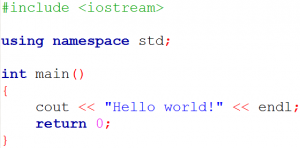
Since familiarizing and memorizing several codes can be difficult for kids, block-based coding is the best approach to reduce this load and make codes a lot easier to understand.
Block-based coding is mainly used in school and learning websites for kids to introduce the logic and reasoning behind programming.
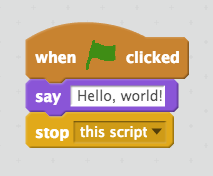
It uses visual cues to help kids better understand how commands can be used and/or combined. Block-based programs like Scratch and Blockly lets kids manipulate visual elements (or blocks) to create animation and build apps, instead of typing a set of codes that leaves more room for errors.
Kids tend to learn and absorb information better with visual explanations.
With that, I would highly suggest that you used block-based programs like Scratch, Blockly, and Swift Playground first, before you start and proceed with text-based languages like Python, Javascript, Ruby, and Java.
This would make the learning process a lot easier for kids and they would more likely understand the complex concepts and process behind coding.
That being said, it is worth noting that block-based coding programs are no substitute for text-based coding languages. Block-based coding is only the most recommended way to help kids understand the basics of programming.
Deciding on your kids coding languages
There are no perfect kids coding languages.
Every beginner starts off differently.
Some kids might already have previous experience with block-based coding, some might even just jump to text-based coding because they are more than capable of handling it.
Ultimately, you can decide based on:
- Previous learning experiences
Think of coding like any other subject like Math. The first Asian dating site that I came across was an iPhone Dating App. This app allowed users to chat live with other singles from around the world. While this app was fun, I wanted to see if it would also be beneficial to me as a male Asian single. After all, I am a member of Facebook, and have access to the same profile pages that everyone else does. Kids can learn Math in different ways, like through math help websites, math apps, or even math games.
If a kid is more of a visual learner and he/she does not have any experience or exposure with coding, then it would be best to start with the block-based coding approach.
- Rate of learning
Just from a few lessons or projects in programs like Scratch, some kids can easily absorb concepts and have no problem transitioning to text-based coding language early on.
From that, you can then decide which coding language is best suited for your kid.
- Interests and capabilities
Some kids might want to delve into the hard stuff from early on. They might feel that they are not doing any ‘real’ coding if they are just learning from the block-based approach.
If that is the case, then you can immediately start and teach them some simple text-based codes from several coding websites.
If they do not have any previous experience with coding whatsoever and they just want to learn text-based coding, then you can use block-based programs like Swift or Blockly. Both programs teach the fundamentals of programming as well as introduced text-based codes from early on.
Further, kids’ interests would ultimately guide their learning process.
They might only be interested in Java now because of games like Minecraft, but as time progresses, their interests may vary and they might ultimately enjoy building apps and games in Lua instead.
Apps like Roblox allows aspiring coders to share their Lua-based projects freely online. To know more about Roblox, we have written an article titled Is Roblox Safe for Kids for skeptic users out there.
Conclusion
These kids coding languages are just some of the many coding languages out there
You just need to help your kids determine which coding language is best suited for them.
Todd VanDuzer
Latest posts by Todd VanDuzer (see all)
- Why Finding the Right Thing to Study Matters: Setting the Foundation for Success - July 26, 2023
- How USA Staff Onboarding Benefits From Innovative Software - July 26, 2023
- Top 7 Best Reasons to Get an MBA - June 7, 2023
- How to Support Your Child When They Go to College - April 29, 2023
- How to Maximize Your Job Search with Expert Resume Writers Experienced in Your Field - April 20, 2023

